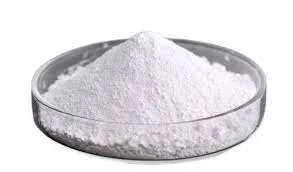Titanium dioxide (TiO2) is a remarkable compound that plays a crucial role in the paint and coatings industry. Renowned for its exceptional properties, TiO2 serves as a primary white pigment, providing brightness, opacity, and durability to various products. This article delves into the characteristics, applications, and benefits of titanium dioxide in paints and coatings, highlighting its importance as a key ingredient in modern formulations.
What is Titanium Dioxide?
Titanium dioxide is an inorganic compound with the chemical formula TiO2. It occurs naturally in various minerals, including rutile and anatase, which are the two primary crystalline forms used in industrial applications. TiO2 is a fine white powder that is insoluble in water but soluble in strong acids and alkalis. Its unique optical properties stem from its high refractive index, making it one of the most effective white pigments available.

Properties of Titanium Dioxide
High Hiding Power: Titanium dioxide boasts superior hiding power, meaning it can effectively mask underlying surfaces. This property allows for fewer coats of paint to achieve desired coverage.
Brightness and Whiteness: TiO2 imparts maximum brightness and a neutral tone to coatings, enhancing their aesthetic appeal.
Durability: The chemical stability of titanium dioxide contributes to the longevity of paint films, making them resistant to fading and degradation over time.
Non-Toxicity: TiO2 is considered safe for use in various applications, including those involving direct human contact, such as cosmetics and food packaging.
UV Resistance: Titanium dioxide provides protection against ultraviolet (UV) light, helping to prevent damage from sunlight exposure.
Applications of Titanium Dioxide in Paints and Coatings
1. Architectural Coatings
In architectural paints, titanium dioxide serves as the primary pigment due to its excellent hiding power and durability. It helps achieve high-quality finishes for both interior and exterior applications. The use of TiO2 allows manufacturers to produce paints that withstand weathering while maintaining their color integrity over time.
2. Industrial Coatings
Industrial coatings often require enhanced performance characteristics such as chemical resistance and durability. Titanium dioxide is utilized in these formulations to improve mechanical strength and adhesion properties. It also contributes to the overall aesthetic quality of industrial paints by providing brilliant colors and finishes.
3. Automotive Paints
The automotive industry relies heavily on titanium dioxide for its ability to produce vibrant colors with excellent opacity. Car manufacturers use TiO2 in base coats and clear coats to enhance the visual appeal of vehicles while ensuring long-lasting protection against environmental factors.
4. Specialty Coatings
Titanium dioxide is also found in specialty coatings used for specific applications such as anti-corrosion paints, powder coatings, and protective coatings for solar panels and wind turbines. Its UV resistance makes it particularly valuable in outdoor applications where exposure to sunlight can degrade other materials.

Benefits of Using Titanium Dioxide
1. Cost-Effectiveness
The high hiding power of titanium dioxide means that less pigment is required to achieve desired coverage levels compared to other white pigments. This efficiency reduces material costs while maintaining quality.
2. Environmental Sustainability
TiO2 contributes to environmentally friendly practices by enabling lower energy consumption during manufacturing processes. Additionally, its ability to reflect infrared light can help reduce cooling costs in buildings by keeping interiors cooler.
3. Versatility
Titanium dioxide can be used across a wide range of paint formulations—waterborne, solvent-based, or oil-based—making it a versatile choice for manufacturers looking to create diverse product lines.
4. Enhanced Performance Properties
The addition of titanium dioxide improves several performance characteristics of paints, including:
Chemical Resistance: Protects against degradation from harsh chemicals.
Weather Resistance: Ensures longevity when exposed to varying environmental conditions.
Mechanical Strength: Enhances adhesion and reduces the likelihood of cracking or peeling.
Types of Titanium Dioxide Used in Paints
There are two main types of titanium dioxide used in paints: rutile and anatase.
Rutile Titanium Dioxide
Rutile TiO2 is known for its superior refractive index and scattering efficiency, making it the preferred choice for high-performance applications such as exterior coatings and automotive finishes. Its stability under UV light enhances its suitability for outdoor use.
Anatase Titanium Dioxide
Anatase TiO2 is often used in specialized applications where its lower cost may be advantageous. While it offers good hiding power, it is less durable than rutile TiO2 and may not be suitable for all outdoor applications.
The Manufacturing Process of Titanium Dioxide
The production of titanium dioxide typically involves two main processes: the sulfate process and the chloride process.
Sulfate Process
In this method, ilmenite ore is treated with sulfuric acid to produce titanium sulfate, which is then hydrolyzed to form titanium dioxide precipitate. The precipitate is washed, dried, and calcined at high temperatures to produce a fine white powder.
Chloride Process
The chloride process involves reacting titanium tetrachloride (produced from rutile or ilmenite) with oxygen at high temperatures to yield titanium dioxide. This method generally results in higher purity TiO2 with better optical properties but requires more complex equipment.

Conclusion
Titanium dioxide remains a cornerstone ingredient in the paints and coatings industry due to its unmatched properties of opacity, brightness, durability, and safety. As manufacturers continue to innovate and adapt to changing market demands, TiO2 will undoubtedly play a vital role in producing high-performance coatings that meet both aesthetic and functional requirements.







